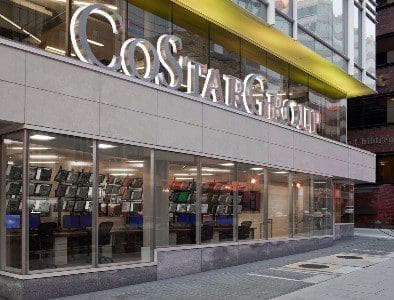 Competition comes in many forms. A hotelier may think the two international branded properties on their street are their biggest threats, but in reality, anything from a resort in a different state to a family member’s house can be in competition with a hotel’s ability to sell its rooms and services. While it is easy to overlook these indirect competitors, it is just as easy to assume certain hotels are main competitors, when a closer look may reveal otherwise.
Competition comes in many forms. A hotelier may think the two international branded properties on their street are their biggest threats, but in reality, anything from a resort in a different state to a family member’s house can be in competition with a hotel’s ability to sell its rooms and services. While it is easy to overlook these indirect competitors, it is just as easy to assume certain hotels are main competitors, when a closer look may reveal otherwise.
To accurately benchmark against the competition, it is crucial that hoteliers understand who their true competitors are. Today, a hotel’s competitive set will have been impacted by COVID-19 market disruptions. Properties that used to be your competitors may no longer be targeting the same business (or targeting any business at all if they’re no longer operational). Conversely, a property you never considered to be in competition with you—perhaps because they were a higher rated business-focused hotel and you primarily target the leisure market—is now producing compelling family packages with better amenities, at competitive rates to your own.
So how do you benchmark against your competition when no one appears to be swimming in the same lane anymore? Hoteliers must ask themselves: what happened to their competitive environment, who are their competitors now, and what impact are they having on their own business?
Reassess your competition
To evaluate where their property sits in its competitive environment today, hoteliers need to understand who their guest is: where are they coming from, how long are they staying for, and what is attracting them to your property? For instance, has your property seen an uptick in domestic travelers arriving via car versus airplane? Are you receiving more staycation guests from the same city in which your property is based looking for a pampered weekend out of the house?
Neither business nor leisure travel looks like it used to. Typically, people are travelling less frequently and over shorter distances. There is a trend towards spontaneous trips, creating shorter booking windows as guests take advantage of last-minute deals.
To help understand who your hotel is in competition with, imagine attempting to book your hotel but your property is sold out. What hotel would you book instead, and why? Based on location, level of property, and pricing factors, you should be able to find a hotel in your competitor set that your guests could turn to if you have no rooms available.
This process can also help identify hotels that are not direct competition, which opens the door to establishing mutually beneficial partnerships for the future. For instance, a non-competing property can direct guests to you when they’re sold out and vice versa.
To build a comprehensive competitor set to benchmark against, hoteliers should also look for properties with similar demand patterns year-round. However, before adding a property to your competitor set, you should investigate whether the booking patterns look similar because it’s a competing brand, or if the patterns are similar because your hotel’s city has a conference or recurring event each year. Having an advanced revenue management system in place can help you understand the data and make sense of the demand patterns.
The process of defining an accurate competitor set is important in helping to determine price positioning. Hoteliers should monitor all relevant competitors’ pricing activities, such as increasing their corporate rate during the week or leisure rate on the weekends, that would compel your own property to respond. It is vital to understand how your hotel’s pricing compares with that of competitors in real-time, so any pricing decisions you make are aligned with your local operating market.
Avoid a race to the bottom
In a disrupted market, hoteliers also have to be careful not to get sucked into continually matching competitor prices and starting a price war. This can damage a hotel’s long-term positioning and erode profit margins further than what has been experienced by COVID-19 interruptions. The longer a hotel discounts its rate, the more likely this lowered rate will become the reference price in the minds of consumers, making it harder for a hotel to lift its rates back to the original price when the market eventually recovers. While it may seem logical that lower hotel prices would stimulate demand for the hotel sector in general, demand for hotels has been found to be historically inelastic. This means when prices drop, the increase in demand won’t be enough to offset the decreased rate to maintain revenues.
While price wars only create lose-lose situations, competitors’ prices and offerings cannot be ignored either. However, it is crucial hoteliers take a long-term, strategic approach to competitor pricing. In the long run this will be far more profitable than impulsive pricing decisions, which only have short term benefits.
Strategise for success
Once hoteliers know where their property sits in relation to competitors, management can start putting strategies together to find the optimal set of prices to generate demand and maximise profit. To minimise the reliance on reducing room rates to attract customers in a competitive environment, hoteliers should look at ways to increase their competitive advantage through enhancing their value offering, including during periods of low demand. This should also include targeting specific customers, with price and value to capture a range of markets. The positioning of key products to key market segments is a vital aspect of dynamic pricing.
When demand is on the rise, hoteliers considering increasing their prices accordingly must look at where they sit alongside their closest competition and remember that the only way to operate at higher rates than competitors is to deliver true value that cannot be matched. It is crucial that additional value is emphasised to potential customers—otherwise a hotel risks losing potential guests to the competition.
Any changes in price should be monitored closely for impact on levels of demand. This information can then be used to control demand accordingly, using daily revenue management and pricing strategies.
Price it right
The uptake of web and mobile technologies over recent years has made it possible for customers to find the cheapest prices quickly and easily for a hotel room in any location. This situation has only intensified price competition across the region and made it more important than ever that your hotel truly understands who its competitors are and is setting its rates accurately in relation to its operating environment.
For more information on how to monitor competitor hotel pricing activity and what it means for your business, please visit: www.ideas.com































